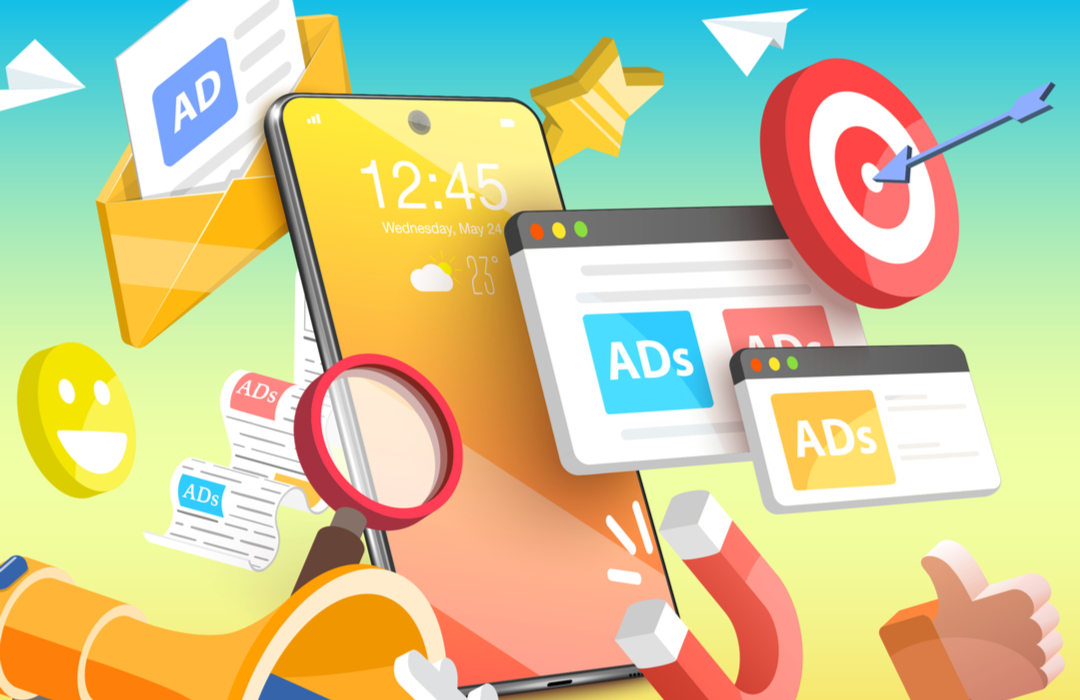When developing on-app advertising campaigns, there are several options available when it comes to the types of ads you can use. Many advertisers use video ads that users can often skip after a certain amount of time has passed, but audiences tend to be much more responsive to interactive and playable ads.
Unlike static image ads or video ads, interactive and playable ads get users directly involved with the ad, which is invaluable if you want to attract more engagement. When people can interact with or “play” an ad, this takes the experience much further and is more likely to make an impression on users.
In this post, we’ll go over what these ads are, the kind of engagement they can generate, and when it’s best to use either type of ad in your on-app campaigns.

What Are Interactive Ads?
As organizations attempt to stand apart from the competition, many of them are using a variety of interactive ads to reach audiences. In addition to apps, advertisers are incorporating interactive ads on platforms like YouTube and Facebook in an attempt to drive engagement.
Interactive ads often involve viewers taking a certain type of action that’s complementary to the ad, such as a QR code that people can scan to engage in an augmented reality experience on their mobile devices, ads that give viewers multiple options that affect different elements within the ad, or a playable ad that enables users to play a type of minigame.
Why Use Interactive Ads?
Interactive ads offer numerous benefits over other less engaging types of ads. While they often cost more than traditional video or image ads, they often yield a high return on ad spend (ROAS) that makes them worth the expense. The ability to interact with an ad naturally drives more engagement that’s likely to establish a strong connection with audiences. Additionally, people are more likely to remember your brand if they enjoy the ad experience, leading to dramatically increased brand recall and recognition among audiences.

What Are Playable Ads?
Playable ads are a specific type of interactive ad that gives users the ability to try a sample of an app or experience before becoming customers. They essentially function as app or brand experience previews that help users determine if an app or brand is right for them.
Many people tend to associate playable ads with mobile games that offer free demos or minigames within an ad, encouraging users to download and play the full game. However, a wide range of industries can use playable ads to engage their audiences in a unique and entertaining way. For example, a company in the finance industry could use a playable app that enables users to play around with a refinance calculator.
While interactive ads could work with a wide variety of models, playable ads tend to adhere to a particular structure: tutorial + interactive element + call-to-action (CTA).
Tutorial
The very first element that your audiences will encounter in a playable ad should be a tutorial, which concisely tells people how to play the featured game. This indicates to viewers what step or steps to take in your ad. Oftentimes, playable ads feature transparent text overlays instructing viewers, and they’ll disappear once the user begins engaging with the interactive element.
Gameplay or Interactive Element
This portion of the ad will include a core interactive element that you want to highlight within the ad. Normally, users would be able to engage with ads using a few simple taps, ending with a kind of reward that further excites users and makes them eager to continue the experience.
CTA
Following engagement with the interactive element, users should see a CTA that encourages them to either download your app or visit your website. Ads may feature the CTA in the middle of the interaction, or once the ad completes its run. The CTA should be brief and compelling to get people to dive deeper.
Levels of Engagement Seen With Each Type of Ad
Interactive ads, including playable ads, offer higher engagement levels than other ad formats.
Interactive Ad Engagement
Studies have shown that interactive video ads engage users far more than conventional video ads. According to Magna, people spend as much as 47% more time viewing marketing messages in interactive ads over non-interactive ads. Merely offering the opportunity to interact with an ad makes the ad 32% more memorable compared to regular video ads, even if people choose not to interact with it.
In addition, Magna found that interactive ads saw an 8% higher rate of unaided brand recall, along with a 10% higher rate of aided brand recall. Other studies have found that conversion rates are also higher for interactive ads, leading to as much as three times the conversion rate of conventional video ads.

Playable Ad Engagement
While interactive ads, in general, attract plenty of engagement, playable ads can potentially engage audiences even further. Interactive ads see up to three times the conversion rate of traditional video ads, but the same study found that playable ads saw conversion rates up to seven times higher.
Many mobile apps tend to use playable ads that appear in other games of similar genres, but you can also drive engagement as a non-gaming company. One of the first brands to use playable ads to drive engagement in 2015 was Burger King, which saw 336,700 plays and an impressive click-through rate of 40.25% within a mere 14 days. The incentive offered was a Burger King coupon, which was enough to entice people to engage.
When to Use Playable Ads vs. Other Interactive Ads
In your on-app advertising campaigns, you’ll benefit greatly from using interactive ads. However, playable ads offer certain unique benefits that you may not find with other types of interactive ads.
Increased Retention and Lower Uninstall Rates
If you offer an app, a playable ad is a great way to encourage people to try the app and engage them, giving them a clear idea of what the actual app experience will be like. Because of this, people will be less inclined to uninstall an app once installed because they know what to expect when first using it.
Additionally, highlighted gameplay experiences can help increase retention as more highly engaged users who enjoy your app experience are likely to continue using it. This will increase your audience’s lifetime value (LTV), which means increased ROAS for you.
Insight into User Behavior
Playable ads also offer more data for advertisers to use to gauge user behavior, which can help them determine how to further optimize the ad experience. For instance, you can determine which types of users are most likely to engage with your ad, along with the CTA that leads to the most conversions.
Other benefits of playable ads include:
- Bringing a moment of delight to audiences, as playable ads offer a combination of focus on a single task and a small time-killing distraction, both of which mobile users love.
- Playable ads take very little time to load, which reduces disruption to allow for a more seamless ad experience.
- Users don’t need to download anything to engage with these ads, further facilitating a seamless experience.
- Ads can contain a variety of rich content, including sweepstakes, coupons, video trailers, and more, all of which encourage more interaction with your app or brand.
Although playable ads offer plenty of benefits, you may want to use other types of interactive ads in addition to these. Some campaigns may benefit from the use of virtual reality (VR) ads that use 360-degree views to engage viewers, while others may use AR technology that enables users to view virtual objects in real-world settings, essentially letting them sample a product. Similar to VR ads, you can use interactive end-cards that give viewers the ability to move around a 3D image.
Ultimately, if you want to increase brand awareness, increase sales, or boost app downloads, both interactive ads and playable ads can help you achieve your goals.
Connect With App Users Through A Variety of Interactive Ads
If you want to drive engagement with your ads in on-app campaigns, interactive ads, including playable ads and others, can do so. While video ads can engage users to some extent, interactive video and gaming ads can take your ads to the next level. By implementing these ads, you’ll encourage more people to directly engage with your brand, which leads to increased brand recall and recognition, along with reduced uninstalls, increased retention, and a higher overall lifetime value. You’ll also differentiate yourself from less engaging competitors who neglect to incorporate interactive ads into their strategies.
As you prepare your on-app ad campaigns, consider using playable ads and other types of interactive formats to give your campaigns the boost they need to succeed. As you measure the results of these and other ads, you can then take the time to optimize them for improved results down the line. Over time, you’re likely to see the value of these ads as you increase ROAS and get the most from your ad spend.



